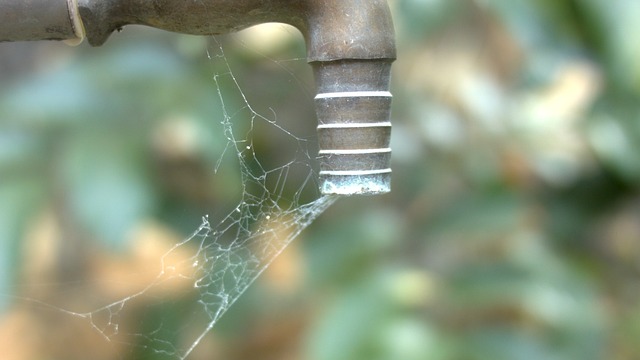
Making a Difference
The Future of Water: Engineering Contributions to Water Management
Read a summary using the INOMICS AI tool
Global water scarcity is a huge problem and one that is not going away soon. In fact, as noted by the United Nations World Water Development Report in 2018, it is an issue that is only going to get bigger, the report stating that nearly 6 billion people will suffer from clean water scarcity by 2050. This shortage is caused by a combination of rising global population (leading to economic development) and a reduction of available water (due to global warming). This increase in demand and decrease in supply has challenged governments, policy makers and engineers to consider what solutions can be found to ease the situation.
Understanding the causes of water scarcity
World population has been increasing ever since records began and whilst the rate of annual growth has slowed down recently, the projections are still up. 25 years ago in 1996, the world population stood at 5.8 billion, today it is 7.8 billion and it is estimated that in another 25 years, in 2046, it will be around 9.5 billion. These huge changes within a generation or two have pushed up demand for water.
Most of the global population growth is expected to be in developing countries, but developed nations also are forecasted to grow. The three most populous countries, China, India and the USA (which together account for 40% of the global population) are set to increase annually for the next decade or so. The population growth spurs on the movement of people from rural to urban areas, prompts economic activity, and increases the need for infrastructure development. These not only increase the demand for water usage but increase overall water pollution – making it harder to recycle the water we currently use.
 The other major contributor to global water scarcity is climate change. Over the years, climate change has led to extreme weather events and changing weather patterns. Increases in global temperature has changed the water cycle patterns, meaning that in some countries, there is much more rainfall while other countries have become drier. Events like flooding and drought can contaminate water supplies, particularly in developing nations, which inevitably lead to poorer health of the people who drink it. Lack of clean water and proper sanitation cause a multitude of diseases, and is one of the biggest killers of children in developing countries.
The other major contributor to global water scarcity is climate change. Over the years, climate change has led to extreme weather events and changing weather patterns. Increases in global temperature has changed the water cycle patterns, meaning that in some countries, there is much more rainfall while other countries have become drier. Events like flooding and drought can contaminate water supplies, particularly in developing nations, which inevitably lead to poorer health of the people who drink it. Lack of clean water and proper sanitation cause a multitude of diseases, and is one of the biggest killers of children in developing countries.
It is perhaps in the space of fresh water supply and wastewater treatment that engineers can have the biggest impact. In fact, whether in developing or developed countries, in rural or urban areas, engineering innovations and technologies will play a vital role in reducing water scarcity, improving water safety and enhancing water usage efficiently. These engineering solutions cannot be underestimated as they will, if successful, help governments achieve the UN Sustainable Development Goal (SDG) No 6, which is to “ensure availability and sustainable management of water and sanitation for all”.
Innovations in water supply and wastewater treatment
Given the clear challenges faced, engineers around the world are coming up with inventions, systems, devices and models to help increase water supply, recycle more wastewater and reduce consumption wherever possible.
Accurate water supply forecasting
First, let’s look at a solution which helps African farmers capitalize on rainfall for crop production – the crop which eventually makes its way to our dinner tables. It is estimated that of the 1.4 billion hectares of cropland around the world, 80% is impacted by rainfall and extreme weather events – both impacted by climate change. Instead of a lack of water wasting crop seeds or a deluge of water washing away the seeds, better rainfall and water management can help. Thus, being able to accurately predict rainfall, storms, and intensity of precipitation can support farmers sow, fertilize and harvest at an ideal time and optimise food production as a result.
A company called Ignitia from Sweden has done just that – a mobile phone based, highly local weather forecasting and fast warning system which is used by small-scale farmers in West Africa. Whilst standard weather modelling works well in mid-latitude regions like Europe and the USA, the tropical region along the equator remains a key challenge.
So, they have developed a model using algorithms calibrated to the tropics and take into account the physical processes that determine weather patterns down to a hyperlocal range. The forecasts are then delivered to farmers daily (via SMS) in partnership with mobile network operators. This innovative solution has been tested in real conditions and found to be 84% accurate (compared with the 39% accuracy of global weather models) and therefore supports farmers to manage their daily activities (dependent on accurate weather forecasts) and helps them improve their yields in the process.
Nanotechnology for water purification
If Ignitia is an example of better rainfall predictions and water supply for agriculture, then the US company Drinkwell is an example of ensuring there is clean water for people to drink. They have been recognised by the US National Academy of Engineering as a leading innovator in the environmental technology space since they developed a low-cost, high-efficiency water filtration system for use in Bangladesh.
In many countries around the world, including in North America, South America and Asia the groundwater has naturally occurring high concentrations of arsenic particularly in low and deeper wells. This can lead to arsenic poisoning. In fact, a 2007 study found that over 137 million people in more than 70 countries were affected by arsenic poisoning of drinking water; and Bangladesh has the greatest number of people being poisoned by drinking untreated water.
Rooted in a chemical engineering solution, Drinkwell has developed an innovative water purification method using nanotechnology-based resin. Nanoparticles of zirconium oxide (ZrO2), which have unique sorption properties (a chemical process by which one substance can attach to another) are used to remove a variety of trace contaminants including arsenic from contaminated water supplies. This new technology platform for clean water is embedded within water infrastructure systems in rural and urban areas purifying millions of litres of water every month.
Reusing wastewater more effectively
A third example of water engineering is when companies improve wastewater and tackle legacy wastewater systems, particularly in urban areas. Wastewater has often been looked upon as a by-product of our use of clean water within the water cycle – but now, due to global water scarcity, engineers have been looking at how to treat more wastewater and use it to play a major role in meeting the demand. According to the UN, increased amounts of untreated sewage, combined with agricultural runoff and industrial discharge, have degraded water quality and contaminated water resources around the world. Additionally, 80% of global wastewater flows back into the ecosystem without being treated or reused and this contributes to approximately 1.8 billion people drinking contaminated water on a daily basis – putting them at risk of contracting cholera, dysentery, typhoid and polio.
Dutch firm DeSaH have developed a decentralised sanitation and recovery concept which is a circular, source separated wastewater treatment system that recovers energy and nutrients in the form of fertilizers and water. The system is most effective in areas where reclaimed water can be reused – newly built, renovated housing projects or high-rise buildings.
The collected organic matter from the black water (from toilets) is converted to biogas and burnt to heat the building whilst the digester produces sludge which can be removed and used as an organic fertilizer. The treated black water is mixed with the grey water (from basins and showers) and further treated in a compact aerated wastewater system to produce cleansed wastewater. This is sent through a membrane filtration unit which retains micropollutants, bacteria and viruses, and clean wastewater is extracted which can be safely reused for toilet flushing, irrigation or cooling systems.
The future of water
These solutions are just some examples of how engineers can help meet the global water demand. With emerging digital technology and new engineering methodologies, Civil, Water and Chemical Engineers (to name but a few) will be needed to bring about and embed these solutions. For the millions of people around the world who live with the reality of water scarcity, the solutions cannot come any sooner.
-
- Other Job
- Posted 1 month ago
Electrical and Automation Technician (EN-AA-AS-2025-217-LD)
At CERN in Genève, Svizzera -
- Programma di Master
- Posted 1 week ago
MSc/PhD in Economics (IDEA) - Barcelona
Starts 1 Sep at Universitat Autònoma de Barcelona in Barcelona, Spagna
-
- Programma di Master
- Posted 3 days ago
Master (MSc) in Behavioural Economics - University of Cyprus
Starts 1 Sep at University of Cyprus in Nicosia, Cipro










